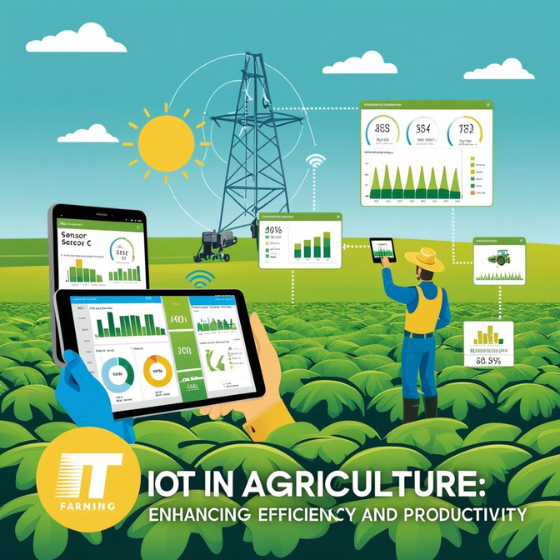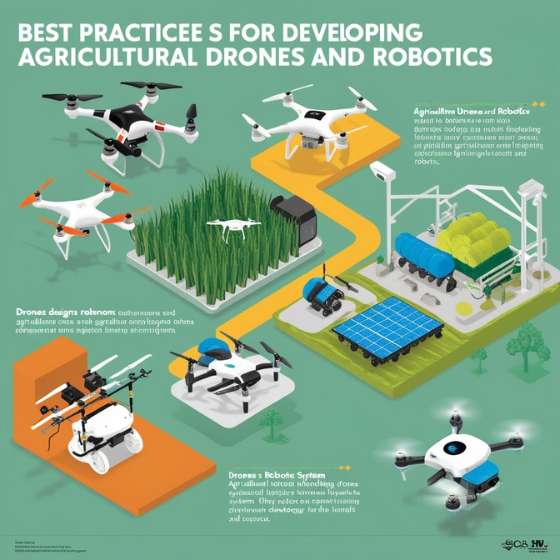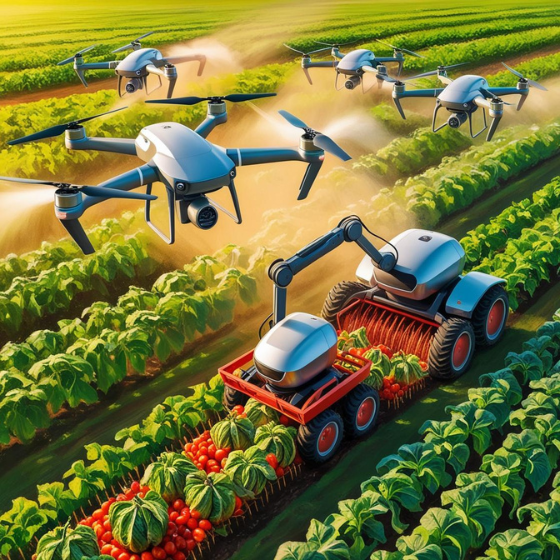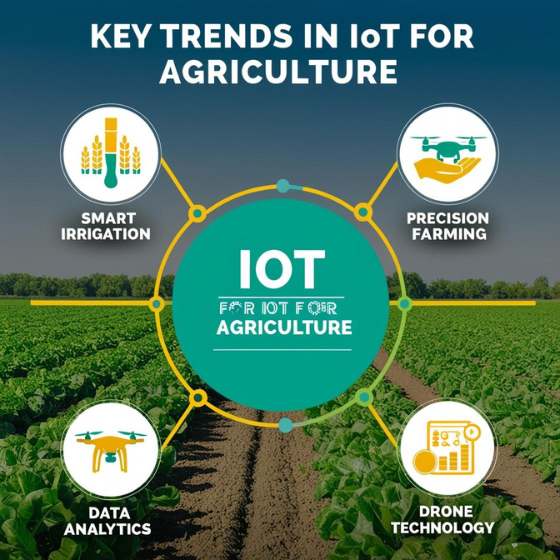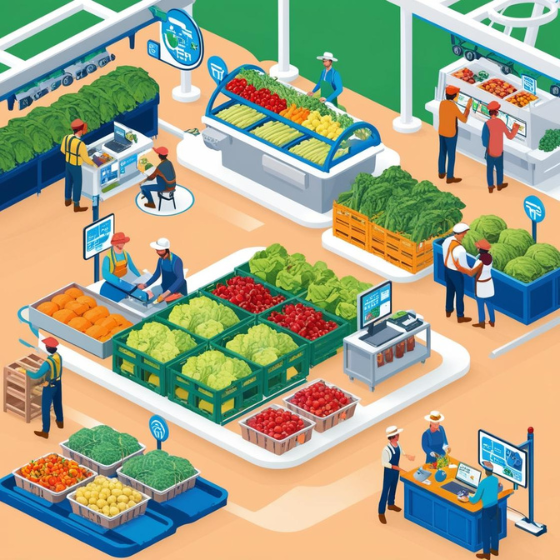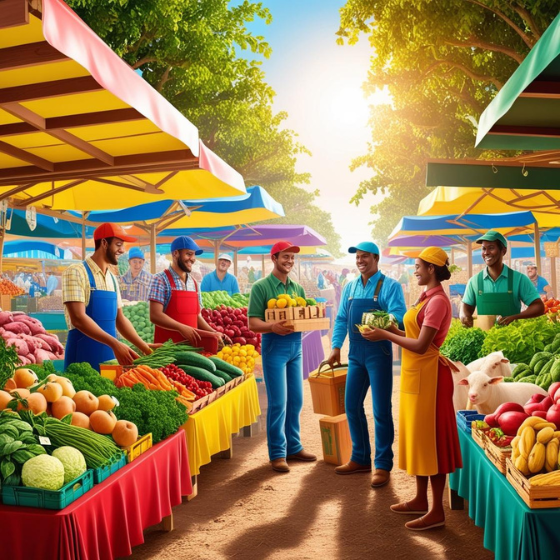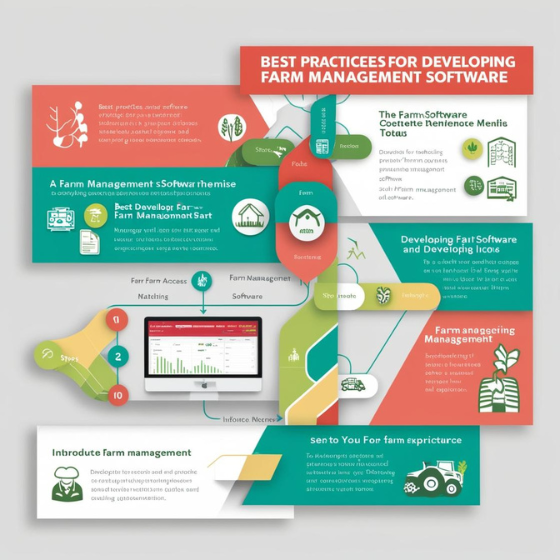IoT in Agriculture: Enhancing Efficiency and Productivity
In recent years, the agricultural industry has been transforming, thanks to the power of technology. One of the most promising innovations is the Internet of Things (IoT), which is playing a pivotal role in enhancing efficiency and productivity on farms. IoT in agriculture involves the integration of smart devices, sensors, and data analytics to monitor and manage various farming operations. From crop health monitoring to livestock management, IoT applications in agriculture are reshaping how farmers approach farming. In this blog, we’ll dive into how IoT is revolutionizing agriculture and the key benefits it offers to farmers.
Understanding IoT in Agriculture
IoT refers to a network of physical devices connected to the internet, enabling them to collect, exchange, and analyze data. In agriculture, IoT devices such as sensors, GPS devices, and drones are used to gather real-time data about crops, soil conditions, weather patterns, and livestock. This data is then processed and analyzed to provide valuable insights that help farmers make informed decisions.
By implementing IoT solutions, farmers can monitor their operations remotely and in real-time. This shift from traditional farming methods to smart farming enhances the overall efficiency, reduces wastage, and ultimately leads to better crop yields and healthier livestock.
Key Applications of IoT in Agriculture
The applications of IoT in agriculture are vast and varied. Some of the key areas where IoT is making a significant impact include:
1. Precision Farming
Precision farming is one of the most powerful uses of IoT in agriculture. It involves the use of sensors and data analytics to monitor soil health, moisture levels, temperature, and other environmental factors that impact crop growth. These sensors provide real-time data, allowing farmers to make precise decisions regarding irrigation, fertilization, and pest control.
- Soil Moisture Sensors: These sensors help farmers monitor the moisture levels in the soil and make real-time irrigation decisions, ensuring that crops receive just the right amount of water.
- Weather Monitoring: IoT devices can track local weather conditions and forecast any potential weather-related challenges, enabling farmers to prepare in advance.
By utilizing IoT-based precision farming techniques, farmers can reduce resource waste and enhance crop production efficiency.
2. Livestock Monitoring and Management
IoT is also revolutionizing livestock management. Wearable IoT devices, such as collars or tags, can be placed on animals to monitor their health and behavior. These devices track vital signs such as heart rate, body temperature, and activity levels, providing farmers with critical insights into their livestock’s well-being.
- Health Monitoring: IoT devices can detect early signs of illness in animals, allowing farmers to provide treatment before the issue becomes serious.
- Feeding and Nutrition: Sensors can track the nutritional intake of animals, ensuring they are receiving adequate food and water, ultimately improving their growth and productivity.
By implementing IoT solutions for livestock, farmers can ensure healthier animals and optimize their farming operations.
3. Crop Health Monitoring
IoT sensors can be used to monitor crop health by measuring factors like temperature, humidity, and soil pH. With this information, farmers can detect early signs of diseases, pests, or nutrient deficiencies in their crops. The ability to monitor crops in real time allows farmers to take immediate corrective actions.
- Disease Detection: IoT sensors can detect changes in the environment that may indicate the presence of harmful pathogens, enabling farmers to apply pesticides or treatments more precisely.
- Nutrient Management: IoT solutions help in managing crop nutrition by providing accurate data about the soil’s nutrient levels, ensuring crops receive optimal amounts of fertilizers.
This proactive approach to crop health helps increase productivity and minimizes the need for excessive chemical use.
4. Automated Irrigation Systems
Water scarcity is one of the biggest challenges facing agriculture today. However, IoT-based automated irrigation systems can help farmers conserve water by delivering water only when and where it’s needed.
- Smart Irrigation Controllers: These systems use data from soil moisture sensors, weather forecasts, and other environmental factors to adjust irrigation schedules automatically.
- Water Conservation: With IoT-driven irrigation, water usage is optimized, helping farmers save resources and reduce costs.
By ensuring efficient water use, IoT technology promotes sustainable farming practices while maximizing crop yield.
5. Supply Chain and Inventory Management
IoT can also optimize the agricultural supply chain. Smart sensors and RFID tags can be used to track inventory, monitor warehouse conditions, and manage shipments. This data can help improve product traceability, reduce spoilage, and streamline the entire supply chain process.
- Inventory Tracking: IoT sensors can provide real-time data on stock levels, allowing farmers and suppliers to monitor inventory and prevent stockouts or overstocking.
- Cold Chain Monitoring: For perishable goods, IoT sensors can monitor temperature and humidity throughout transportation, ensuring that the products are delivered in optimal condition.
By improving supply chain operations, IoT can reduce waste and increase the efficiency of agricultural distribution networks.
Benefits of IoT in Agriculture
The adoption of IoT in agriculture brings several benefits that can enhance efficiency and productivity on farms. These benefits include:
1. Increased Crop Yields
With the data gathered from IoT sensors, farmers can make more informed decisions, leading to better crop management and higher yields. Precision farming techniques enabled by IoT devices ensure that crops receive the right amount of water, nutrients, and pest control, promoting optimal growth conditions.
2. Reduced Operational Costs
IoT solutions enable farmers to optimize resources such as water, fertilizers, and pesticides. This reduction in resource waste not only helps save costs but also makes farming practices more sustainable.
3. Improved Sustainability
By using IoT-based solutions for water conservation, soil health management, and pest control, farmers can reduce their environmental footprint. IoT enables more efficient farming, ensuring that resources are used sustainably while maintaining high productivity levels.
4. Real-Time Monitoring and Remote Management
IoT devices enable real-time monitoring of farming activities, allowing farmers to manage operations remotely. This flexibility enables farmers to take timely actions, even when they are not physically present on the farm.
5. Better Decision Making
IoT devices provide actionable insights by collecting vast amounts of data that farmers can use to make more informed decisions. These data-driven decisions can result in more effective farming practices, improved resource management, and increased profitability.
Challenges of Implementing IoT in Agriculture
Despite the many benefits, there are also challenges associated with implementing IoT in agriculture:
- High Initial Costs: The initial cost of setting up IoT infrastructure, including sensors, devices, and software, can be high for farmers, especially in developing regions.
- Data Overload: With so much data being generated, it can be challenging to sift through and make sense of it all. Having the right data analytics tools is essential for effective decision-making.
- Connectivity Issues: Rural areas often suffer from poor internet connectivity, making it difficult to implement IoT solutions that rely on constant connectivity.
Conclusion
IoT is undeniably transforming the agriculture industry, enhancing efficiency, and productivity across various sectors, from crop monitoring to livestock management. By leveraging IoT technologies, farmers can make smarter decisions, optimize resource usage, and improve overall farm operations. However, to fully realize the benefits of IoT in agriculture, it is crucial to invest in the right technology, data analytics, and connectivity solutions.
If you’re looking to explore IoT solutions for your farm or agribusiness, Sodio offers innovative tools and expertise to help implement IoT in agriculture and optimize your operations. Contact us to learn how we can help transform your farm with IoT technology today.
